The Walter Pick Holocaust and Genocide Book Box Fund supports OJMCHE’s efforts to provide K-5 classrooms around Oregon with a curated selection of books to help educators teach students about the Holocaust as well as Jewish history, life, and culture. Teachers are afforded the opportunity to choose from a variety of different books, all curated by OJMCHE, to address SB664 Holocaust and Other Genocide learning concepts, including nine different picture books for K-2 educators and a combination of eight different picture books and novels for 3-5 educators.
Books are provided to teachers for free! Choose which books from the titles and descriptions below on the order form provided. Each book comes with a companion curriculum guide to assist you with instruction. Expect 4-6 weeks between the time of order and delivery of your books to your school.
Titles and Descriptions of books for K-2 Classrooms
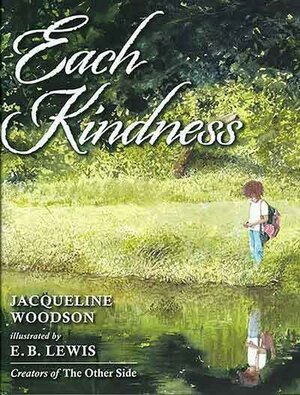 |
Each Kindness by Jaqueline Woodson The story is told from the first-person perspective of Chloe who meets a new student named Maya in her class at school. Maya is different from most students in dress, food, and playtime activities. Because Maya appears different from the others, Chloe and her classmates exclude Maya from their friend group, creating harmful nicknames and telling secrets about Maya to exclude her. One day, the teacher, Ms. Albert, provides a lesson to students about kindness and its rippling effects throughout the community. The story offers Chloe a moment of ethical self-examination and an opportunity to extend kindness to Maya. However, it is too late. Maya has left the school, and does not return. Still, Chloe has learned a valuable lesson and seems to have grown into a kinder person through her mistakes and new lessons learned. |
 |
The Sneetches and Other Stories by Dr. Seuss In this book, a group of Sneetches have stars on their bellies. He arranges to imprint stars on their bellies so they can feel included. One day, a businessman arrives and exploits the desire of the Sneetches without stars on their bellies to have stars so that they can be included and equal. However, the plan backfires when the businessman also sells a star removal service to the star-bellied Sneetches. Everyone gets confused and ultimately realizes they do not need to let stars divide them. |
 |
Benno and the Night of Broken Glass by Meg Wiviott A cat named Benno lives in Berlin and enjoys the company of many different neighbors. When the Nazis pass discriminatory laws against Jewish people, men in brown shirts burn Jewish books and buildings. The violence intensifies little-by-little until one day Jewish people disappear. The story is told from the point-of-view of Benno the cat who notices how the community is disrupted by growing violence that leads up to and sparks “Kristallnacht,” the night of broken glass. |
 |
The Cats in Krasinski Square by Karen Hesse Two sisters (the unnamed narrator and Mira) work with the Polish Jewish resistance to smuggle food into the Warsaw Ghetto during the Holocaust. When the Gestapo discovers their plan, the Jewish resisters use cats living in Krasinski Square to distract the Gestapo from noticing that they’re smuggling food to starving people living behind the ghetto walls. |
 |
Peaceful Fights for Equal Rights by Rob Sanders A diverse cast of characters show a multitude of ways people can participate in the defense of or striving for equal rights for all. Illustrations allude to many different historical examples. |
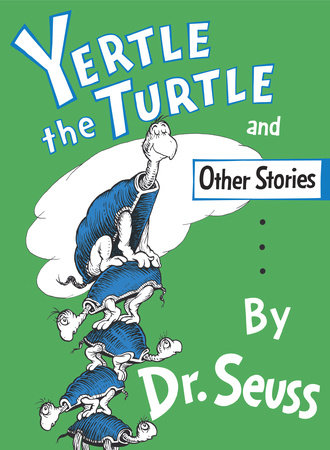 |
Yertle the Turtle and Other Stories by Dr. Seuss Yertle the Turtle King commands all the turtles in the surrounding pond to stack on top of each other and hoist him higher so he can rule over all he sees. When the turtles near the bottom of the stack say their backs hurt, Yertle ignores them and remains fixated on increasing his power. He orders more turtles to join the stack. When Mack, the turtle at the bottom of the stack, burps the whole turtle tower crumbles. Yertle becomes “King of the Mud” and “all the turtles are free.” |
 |
Counting Kindness: Ten Ways to Welcome Refugee Children by Hollis Kurman This book shows a mother and her three children fleeing their burning home. With no place to live, they travel by boat to a new land. People show kindness by providing them with books, gifts, toys, clothing, shelter, and food. The children begin school and play soccer with their friends. The book provides an invitation for students to consider the needs of refugees and to think of the many ways people can help. The book also presents opportunities for learning or practicing counting numbers. |
 |
The Whispering Town by Jennifer Elvgren A young girl, Anett, and her Danish family hide a Jewish mother and son for a few days until it is safe for them to escape to Sweden, a neutral nation during World War II. This story is based on actual events in Gilleleje, a small Danish fishing village that helped about 1,700 Jews escape Nazi occupied Denmark in 1943. |
Titles and description of books for 3-5 classrooms
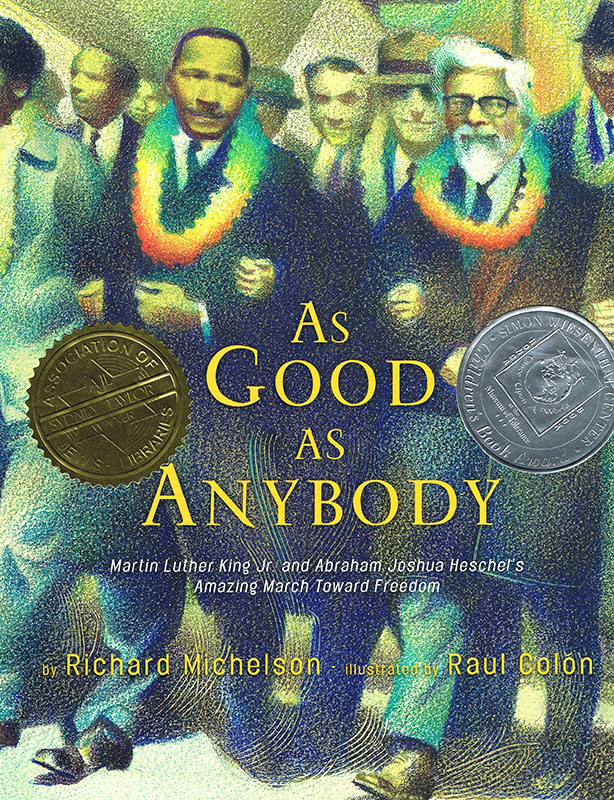 |
As Good As Anybody: Martin Luther King Jr. and Abraham Joshua Heschel’s Amazing March Toward Freedom by Richard Michelson This book describes two parallel histories. First, Martin Luther King Jr. is introduced through his childhood experiences in the segregated city of Atlanta, Georgia and through his father’s influence in his life. The narrative follows Martin’s leadership in the Montgomery Bus Boycott in 1955 and the Freedom March from Selma to Montgomery, Alabama in 1965. The second history addresses the life of Abraham Joshua Heschel and his own father’s influence in his life. This second narrative follows Heschel’s expulsion from Germany as a student when Hitler came to power; his flight from Poland during the Holocaust; his civil rights activism; and his relationship with Martin Luther King Jr. which culminated in the famous fifty-four mile Freedom March from Selma to Montgomery, Alabama in 1965. |
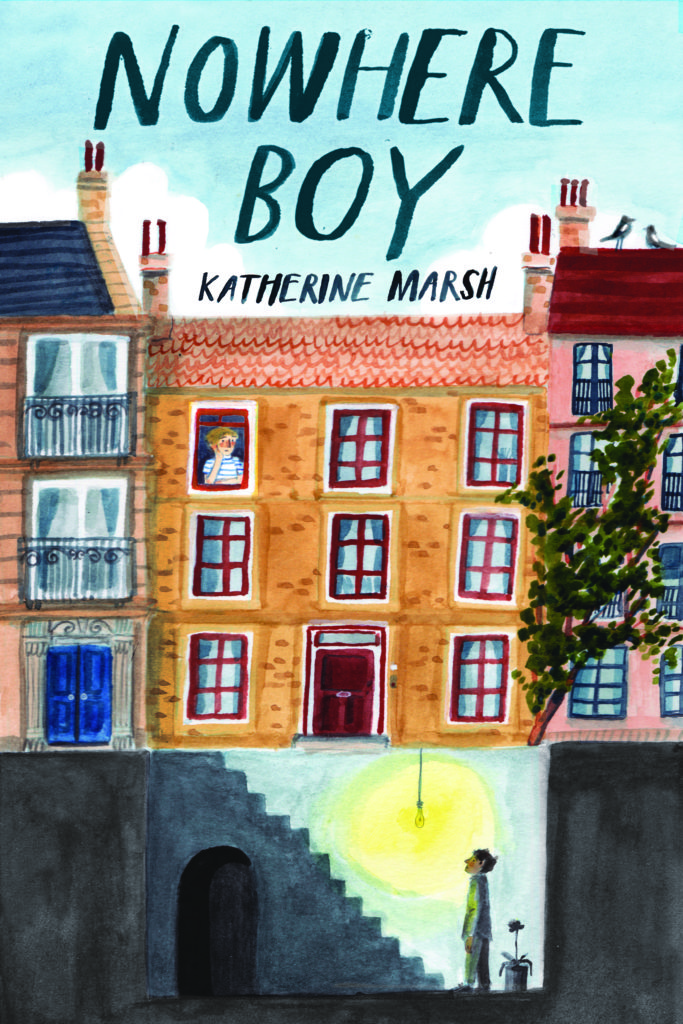 |
Nowhere Boy by Katherine Marsh When his father is given a year-long assignment as a defense consultant at NATO, Max Howard and his family move from America to Belgium. Their new house is located on a street named after the Belgian lawyer who hid a Jewish teenage boy during the Holocaust. In time, Max discovers a fourteen-year-old boy named Ahmed Nasser living in a secret cellar in his family’s rented house. Ahmed shares his harrowing escape story with Max, including details about how he fled Syria and ended up in hiding in Belgium. Max uses illegal tactics to help Ahmed attend school and live safely in hiding. Their plan is thwarted, however, when bombs explode and, as a result, racism surges. In the end, Max and Ahmed must confront the trail of lies they created to save Ahmed and to resist racism. |
 |
Number the Stars by Lois Lowry Told from the point of view of ten-year-old Annemarie Johansen and set in 1943, three years after the Nazi invasion of Denmark, Number the Stars tells the story of the Danish resistance movement. Annemarie’s parents make the decision to hide her Jewish friend, Ellen Rosen, to keep her safe from the Nazis. Annemarie and Ellen travel with Annemarie’s mother to the home of uncle Henrik who lives on the coast of Denmark. Here, in this secluded countryside, Annemarie learns about her family’s resistance work of helping Jewish people escape Nazi occupied Denmark. In the end, Ellen and her parents are smuggled out by hiding under the floorboards in Henrik’s boat. Number the Stars is a fictional story about real events. The character Annemarie is based on stories told to Lois Lowry by one of her Danish friends. |
 |
Once by Morris Gleitzman Once is set in Poland in 1942. A Jewish boy named Felix lives in a Catholic orphanage, placed there by his parents for his safety. When Nazis come to the orphanage and burn books, Felix decides he must escape to find his Jewish bookseller parents, to warn them that “their books are in danger.” Once he leaves the orphanage, Felix must hide from the Einsatzgruppen (Mobile Killing Units). He meets a girl named Zelda whose Nazi parents have been killed by the Polish resistance. Felix and Zelda form a familial bond and hide from the Nazis with several other children under the protection of a dentist named Barney. Everyone is eventually caught and put into a cattle car headed for the Treblinka extermination camp. Felix and Zelda jump from the train and escape. |
 |
Out of Hiding: A Holocaust Survivor’s Journey to America by Ruth Gruener Out of Hiding is the memoir of Ruth Gruener, a Jewish girl, who was five-years-old when Germany invaded Poland in 1939. Ruth recounts her survival during the Holocaust, her immigration and experience as a refugee, and her assimilation in the United States. |
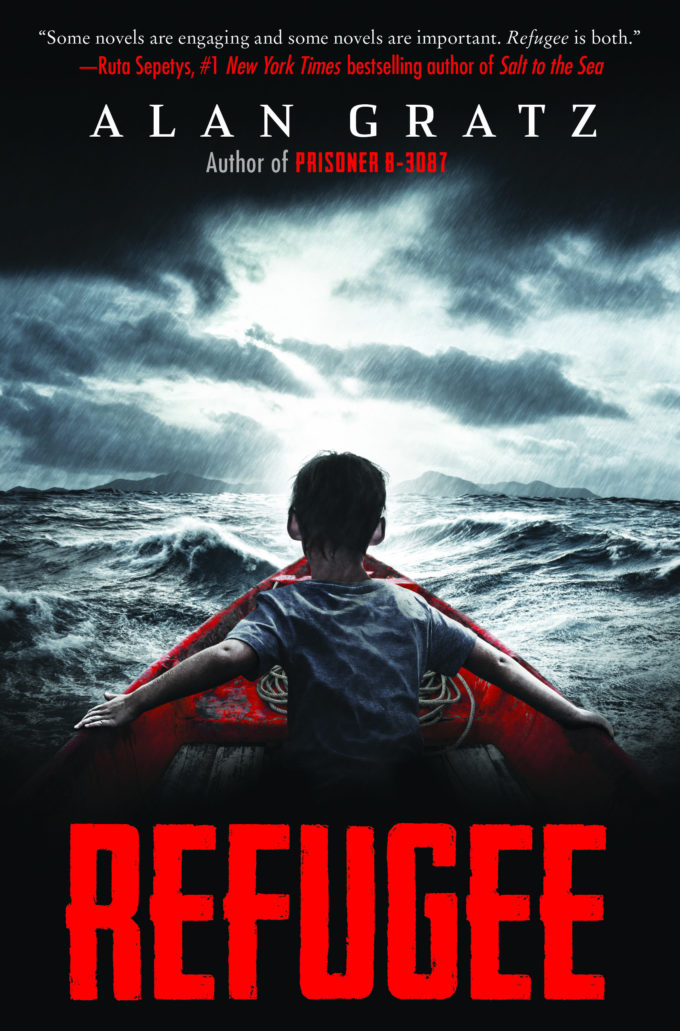 |
Refugee by Alan Gratz This novel follows the parallel journeys of three child protagonists living at different times in history, all of whom have to flee their homes due to national conflict. Josef’s family is fleeing Nazi Germany in 1938 on the St. Louis, a ship headed for Cuba in a quest to find asylum for its passengers. Isabel and her family flee Havana and the dictatorship of Fidel Castro in 1994, the year of its economic collapse. The third story follows the family of Mahmoud in their 2015 journey from Aleppo to Germany in search of asylum from the ongoing civil war in Syria. Each family faces obstacles and loss. Their stories emphasize the need for people to help and support refugees forced to flee their homes. |
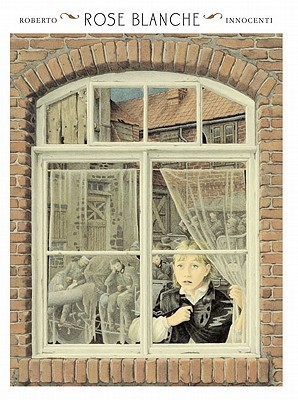 |
Rose Blanche by Roberto Innocenti In the woods just outside her town, a German girl, Rose Blanche, discovers a concentration camp occupied by Jewish inmates. She begins to sneak food to the prisoners in the camp, and is accidentally killed in the crossfire when Soviet armies arrive to liberate the people imprisoned in the camp. |
 |
The Devil’s Arithmetic by Jane Yolen Hannah attends a Passover seder with her family. When she welcomes Elijah at the door, Hannah is magically transported to 1942 Poland where she experiences the events of the Holocaust, including deportation and survival in a killing center. After this traumatic experience, she is transported back to the present. Hannah learns both the value of resistance in the face of oppression and persecution and the importance of shared cultural memory and identity as a Jewish person. |